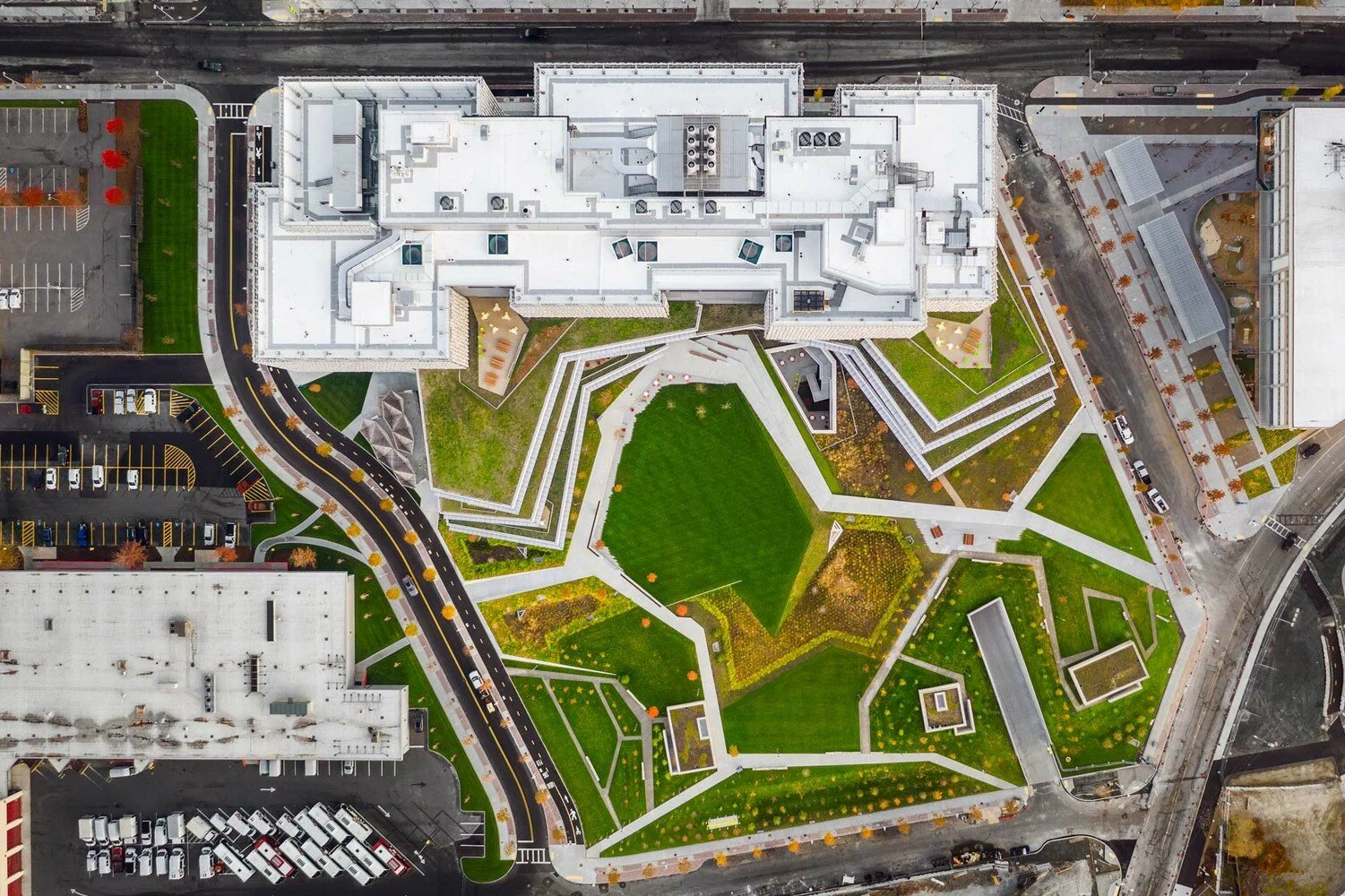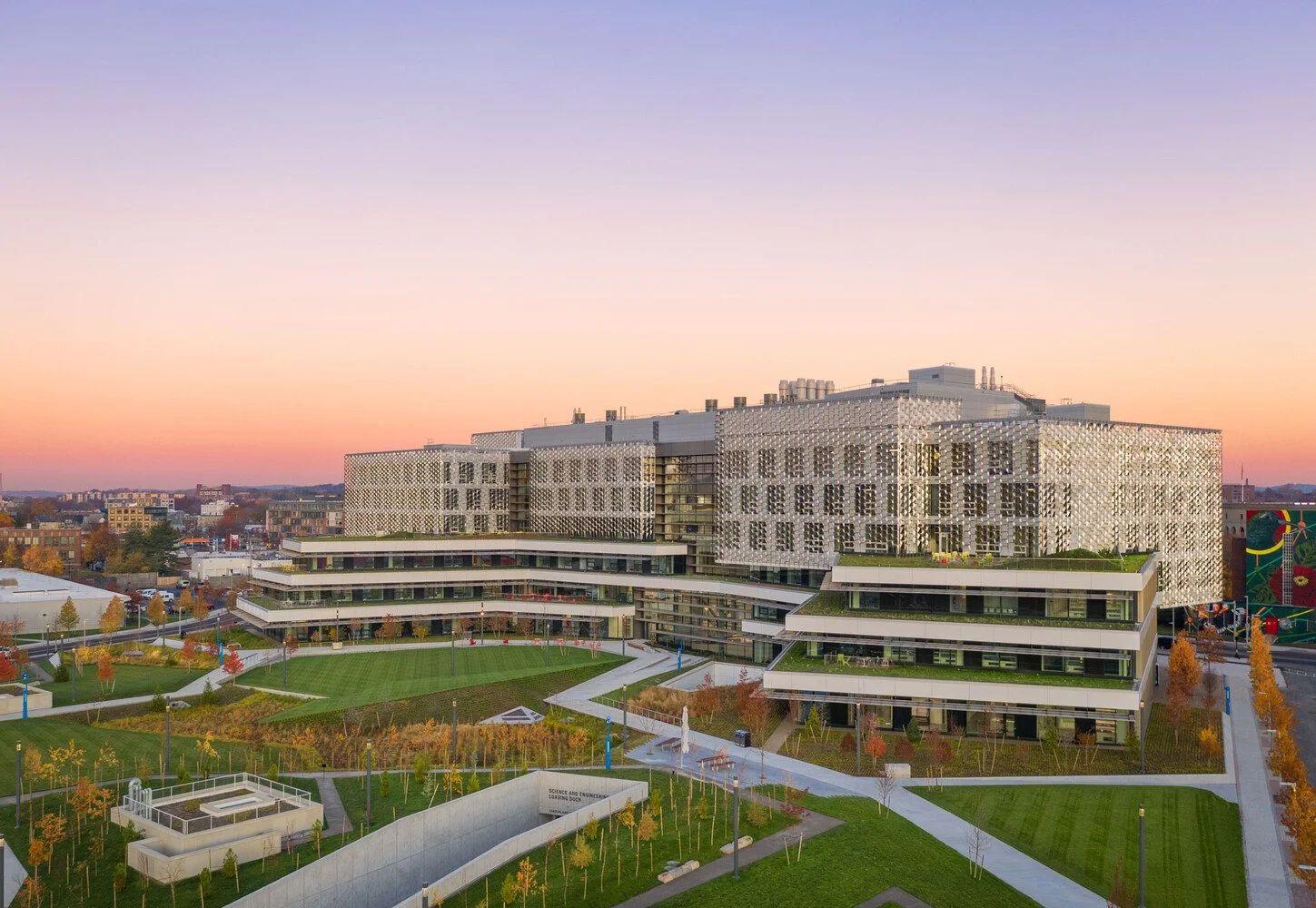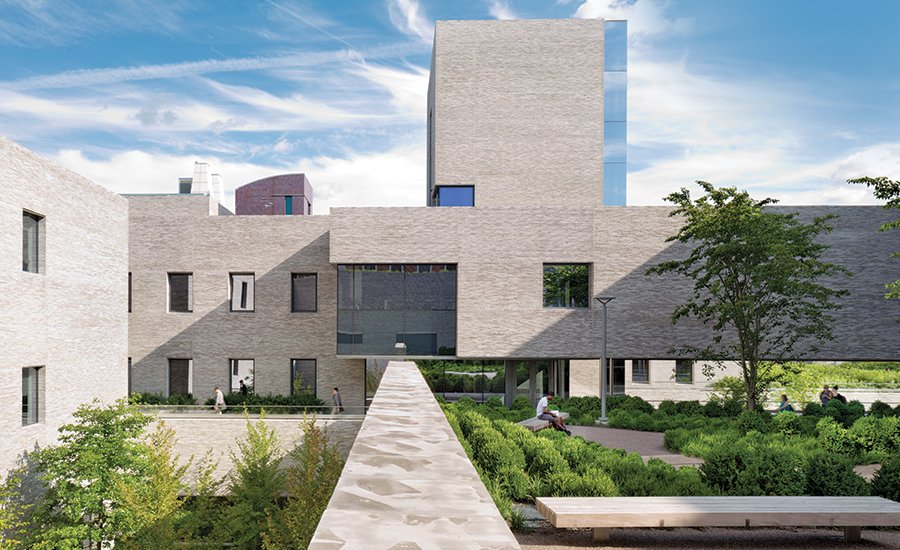Four Barriers to Implementing Green Roofs – And How to Overcome Them
Advertisement
Green roofs have been implemented for decades for their wide range of environmental benefits. As climate change threatens our cities with increased flood risk and heat impacts, green roofs are commonly identified as a powerful strategy for building more resilient cities. Yet, why do we not see more green roofs on our new or renovated buildings?
Harvard University’s Science and Engineering Complex, Allston MA, architect: Behnisch Architekten. Photo: Brad Feinknopf
In a given city, the path to widespread green roofs requires implementation on a parcel-by-parcel basis. While many developers may consider green roofs during the early stages of planning, fewer move forward with designing and installing green roofs. This is particularly true in cities where green roof incentives, programs, and policies are not available. Of the countless benefits green roofs have to offer, many “turnkey” developers still cannot justify the cost of a green roof given their narrow timeframe and incomplete evaluation of cost-benefits. Successful green roof implementation tends to be achieved voluntarily by owners that have a long-term commitment to their property (such as Higher Education Institutions) and when green roofs are considered for all their sustainability and resiliency co-benefits, including but not limited to stormwater.
Stormwater management is a leading driver for developers and design teams to consider green roofs for new and renovated buildings in humid climates. The topic of stormwater tends to foster a lot of attention during the external stakeholder engagement process because flood risk caused by climate change is a hot button topic, and given the fact that stormwater is uniformly reviewed as part of most regulatory approvals processes. Green roofs, and combination green-blue roofs, are highly effective at detaining, retaining, and evaporating rainwater which makes them a powerful and resilient strategy for addressing inland flooding and reducing combined sewer overflows. Despite being an optimal solution for addressing current and future predicted urban stormwater issues, many unique barriers limit the widespread implementation of green roofs to address stormwater.
This article offers four observed barriers from the perspective of a civil engineer focusing on green infrastructure implementation projects throughout the northeast and mid-Atlantic regions of the United States.
Advertisement
Harvard University’s Science and Engineering Complex, Allston MA, architect: Behnisch Architekten, Photo: Brad Feinknopf
Barrier #1: Siloed Design Team Roles and Responsibilities
The design of drainage and stormwater management systems typically falls under the scope of the civil engineer. However, because a green roof is constructed entirely upon structure, the green roof design components are not covered by the civil engineer’s construction drawings which typically begin 5-feet outside the building footprint. The green roof design components are typically included on the architectural, structural, landscape, and plumbing drawings – with the civil engineer only picking up the roof drain overflow and conveyance from 5-feet outside the building.
Green roof at the Harvard Business School’s Ruth Mulan Chu Chao Center; architect: Goody Clancy, Photo: Goody Clancy
This division of scope is a potential barrier to the successful implementation of a green roof, particularly for projects which do not have a civil engineer that is engaged in the integrated and collaborative design process from the onset of the project. The civil engineer has a critical role in ensuring a green roof is optimized for stormwater performance but is oftentimes left out of critical coordination discussions between other team disciplines responsible for the documentation of the green roof. The civil engineer must work closely with the design team to help optimize the green roof cross section to meet the project’s stormwater management goals and requirements, being ultimately responsible for preparing hydrologic stormwater calculations that document the green roof performance. This issue illustrates the importance of a collaborative and cohesive design team, which includes the civil engineer.
Barrier #2: Value Engineering and Single-Benefit Cost Analyses
Because green roofs tend to be at risk of being removed from a project during “value engineering” exercises, a civil engineer may be asked by their client to conservatively develop a stormwater management strategy for the project that relies entirely on site-based green infrastructure and infiltration strategies. While this approach ensures that a backup plan for managing stormwater is in place should the green roof be eliminated from the project, it may lead to unintended consequences. For example, the owner may decide to compare the cost of the green roof to the cost of the site-based stormwater management measures and eliminate the green roof due to its “higher cost.” In this case, the entire design team, including the civil engineer, must educate the client that a cost analysis focusing solely on stormwater alone does not provide an apples-to-apples comparison. A cost-benefit analysis that considers all the measurable co-benefits of a green roof (roof life, energy savings, etc.) is necessary for the owner to make a truly informed decision. Although stormwater is a primary benefit of green roofs, it oftentimes cannot be financially justified using a single-benefit cost analysis around stormwater alone.
Advertisement
Green roof at the Harvard Business School’s Ruth Mulan Chu Chao Center; architect: Goody Clancy, Photo: Goody Clancy
Barrier #3: Lack of Green Roof Policies and Competing Incentives
Although green roofs are commonly promoted by most stormwater guidelines, green infrastructure toolkits, and resilience guidelines, many developers ultimately seek alternate compliance paths for managing stormwater by selecting lower-cost site-based green infrastructure practices on site where green roof policy and incentives do not exist. Flood risk exacerbated by climate change is also hot button consideration for inland and coastal cities across the United States and green roofs are a powerful tool for addressing these issues. As these cities develop climate adaptation plans, they often include guidelines and toolkits for developers that include recommendations, but not mandates, for green roofs and combination green-blue roofs.
Green Roof policy and incentives vary widely across the US and are typically driven at the local and state levels where they do exist. In contrast, policies and incentives surrounding clean and renewable energy have become much more widespread in recent years and driven from the federal, state, and local levels. The financial benefits and near-term return-on-investment for rooftop solar are highly appealing to owners at present day. As such, an uninformed owner or design team may immediately prioritize rooftops for solar and not study the co-existence of green roofs and solar nor recognize the fact that green roofs can help improve the efficiency of solar. This “competing” issue makes the need for more incentives and policy around green roofs more important than ever. Some cities, such as Cambridge, Massachusetts have recently developed a policy that requires the use of green roofs and/or solar on rooftops. The green roof policy requires developers to study and consider the benefits of all rooftop strategies, including green roofs, and is a driver for developers to study green roofs, solar, and the combination of the two.
Barrier #4: Timing of the Permitting Process
In Municipalities that lack green roof policy and incentives, the permitting process may pose another barrier. Large and complex projects tend to begin the permitting process as early as possible given lengthy timeframes for approvals. The stormwater management plan and calculations for conformance with local/state stormwater regulations are typically reviewed with site plan, zoning, and environmental review applications. These types of permits are typically submitted by the end of the design development phase, sometimes concurrent to or even before the construction documents phase has commenced. This presents a challenge when the design of the green roof is still in progress.
Princeton University’s Andlinger Center for Energy and the Environment; architect: Tod Williams Billie Tsien Architects. Photo: Architectural Record
If the project owner is not entirely committed to moving forward with the green roof, the civil engineer is often asked to prepare and submit a stormwater management plan that relies on site-based approaches and which states that the project is exploring a green roof which would go “above and beyond” the stormwater requirements. In this case, once the project receives its approvals, the design team has less incentive to optimize the green roof for its stormwater management benefits. Although the green roof’s stormwater performance could potentially reduce or eliminate the need for the site-based stormwater strategies, the owner tends to avoid submitting revisions to permitting authorities since it may result in additional review time and risk of delay for the project. Alternatively, once the project receives its approvals, the owner may be more inclined to remove the green roof from the project, knowing that the stormwater management requirements are satisfied without it. This case further supports the need for an early and effective integrated design process and a clear decision-making process that involves the owner, design team members, and other critical stakeholders – as well as the need for green roof policies and incentives.
In conclusion, the barriers to green roof implementation can be minimized through an early and organized integrated design process that involves participation and commitment from all stakeholders. This is particularly important in municipalities that lack incentives and policies supporting green roofs. In these cases, green roofs must be studied, designed, and optimized for all their co-benefits, including stormwater.
Advertisement
Nicole Holmes, PE, LEED AP, Sustainability and Innovation Practice Lead, Nitsch Engineering
Nicole specializes in working collaboratively with multi-disciplinary design teams to integrate stormwater design solutions into the landscape. Some of her key projects have included innovative stormwater master planning services at the University of Virginia, the Harvard Business School, the Massachusetts Institute of Technology (MIT), and Princeton University. Her experience also includes urban green infrastructure design and planning projects such as the Kennedy Street Green Infrastructure project in Washington DC, and a variety of green infrastructure streetscape projects in Boston through an on-call contract with Boston Water and Sewer Commission.









